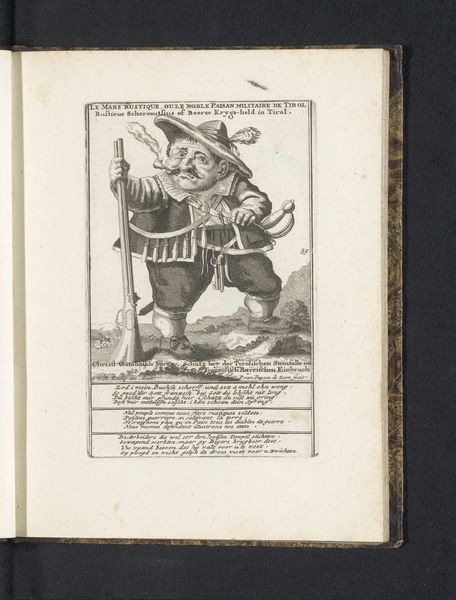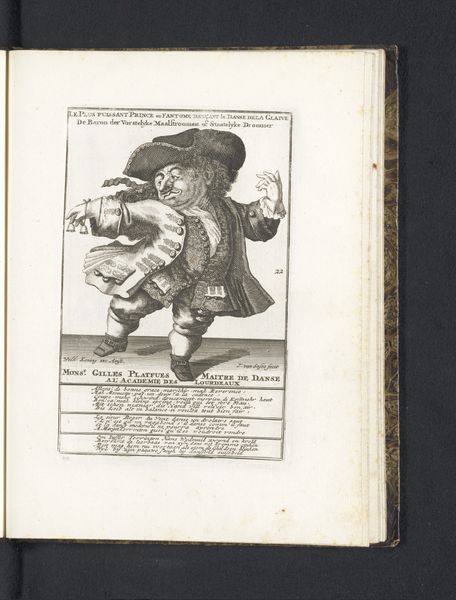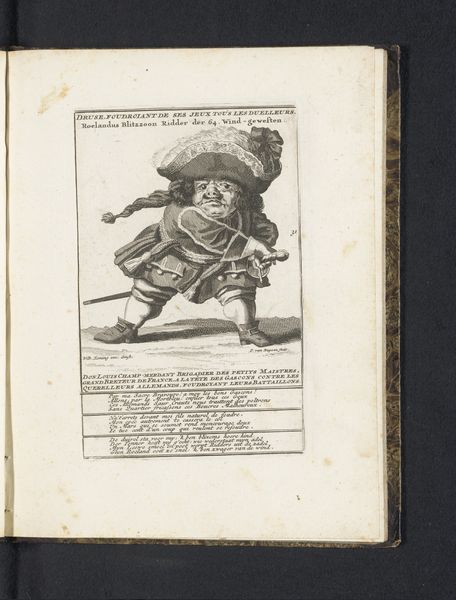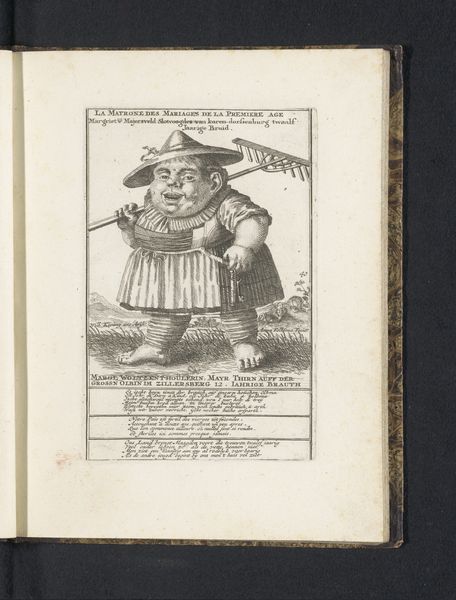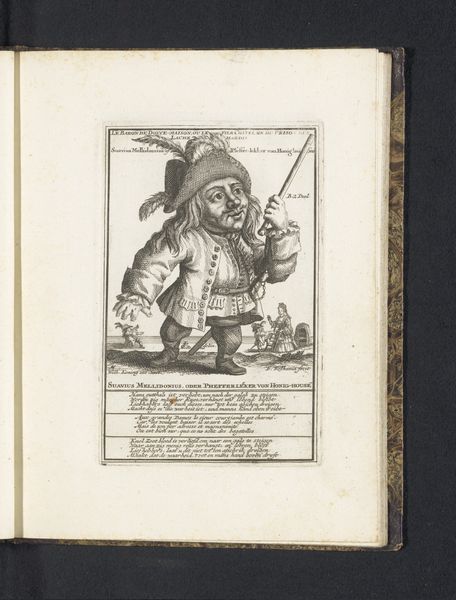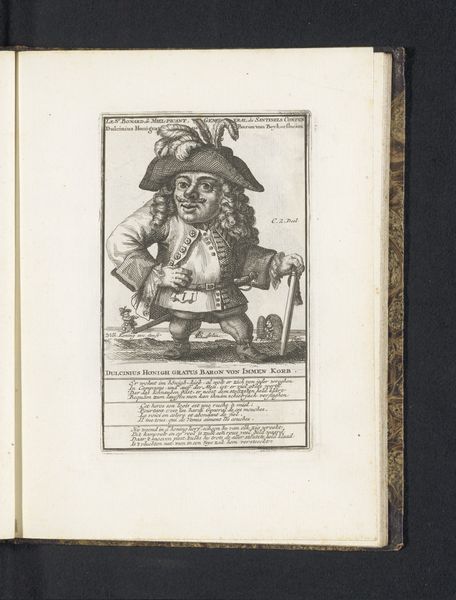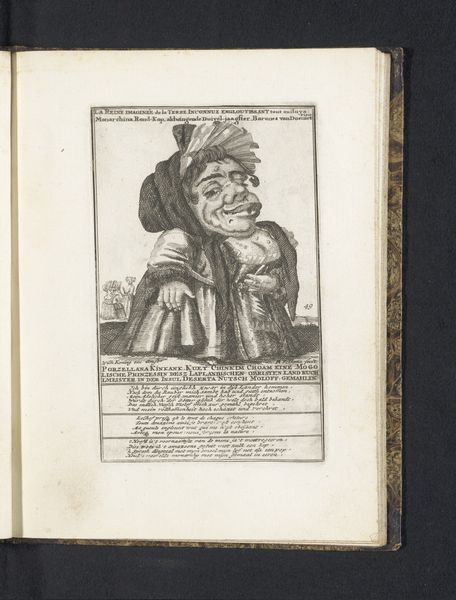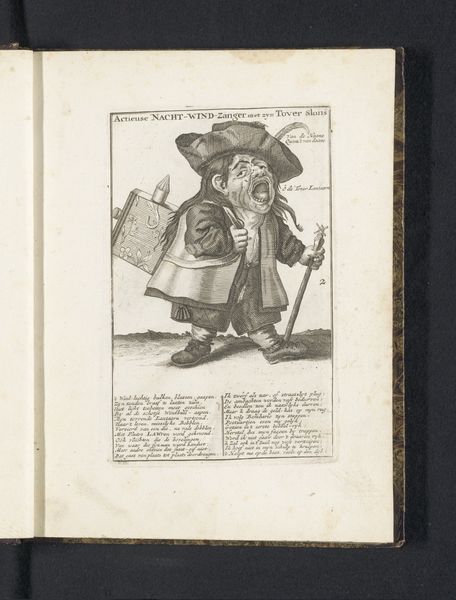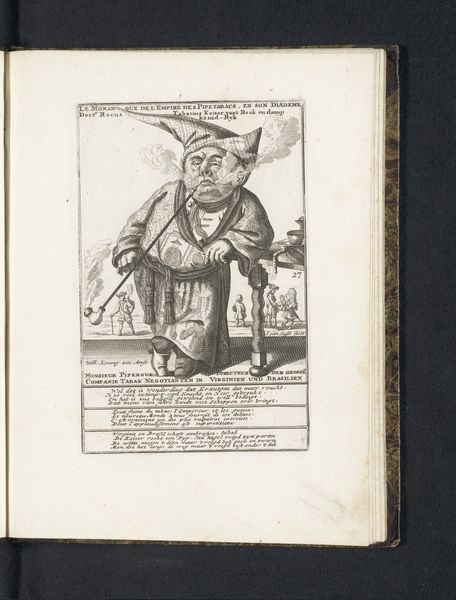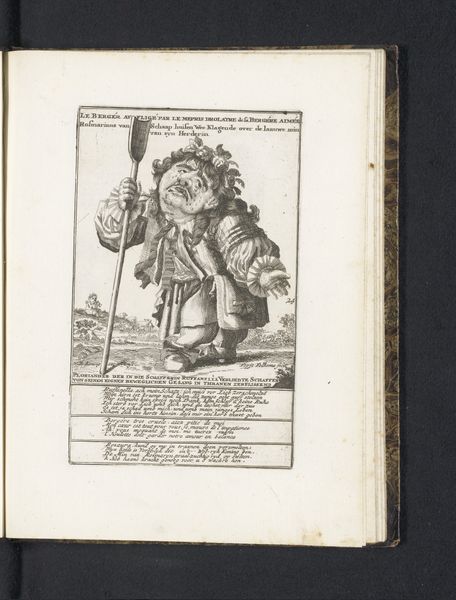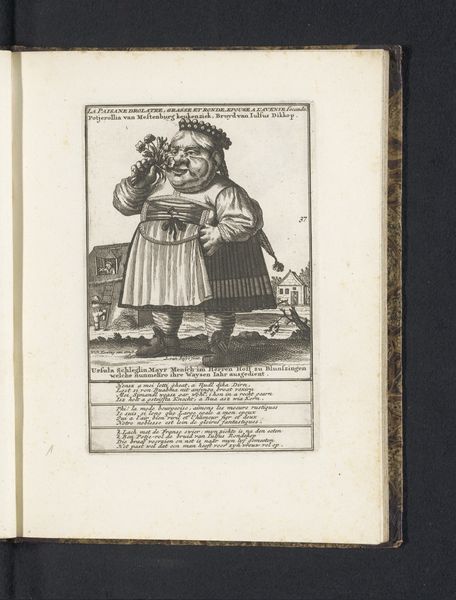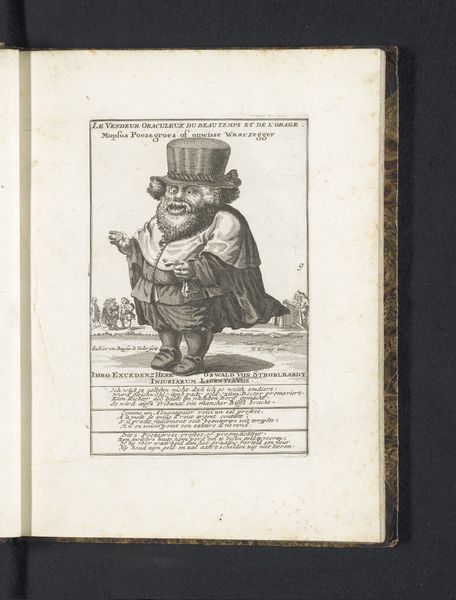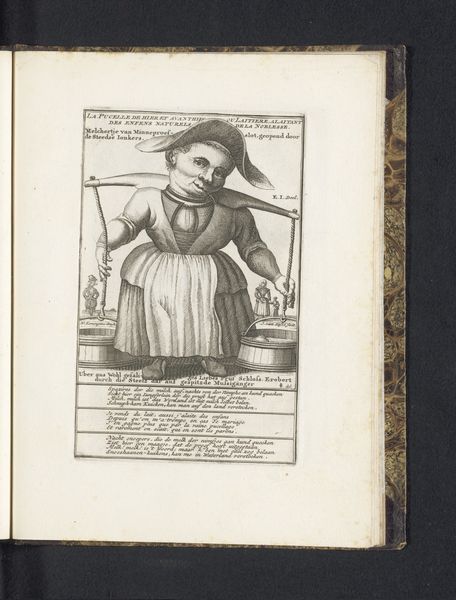
paper, engraving
#
portrait
#
baroque
#
caricature
#
paper
#
engraving
Dimensions: height 169 mm, width 105 mm, height 227 mm, width 170 mm
Copyright: Rijks Museum: Open Domain
Anna Folkema created this engraving of "De dwerg Brutal-tronius van Aldwing-burg" around 1720, and the image's lines and textures hold much social commentary. Engraving is an intaglio process: the artist carves lines into a metal plate, applies ink that fills those lines, and then presses paper against the plate with great force, transferring the image. Look closely, and you can see the remarkable precision Folkema achieved with this demanding technique, and the level of detail on display. Notice the character's face, the folds of the clothing, and how the lines create a sense of depth and shadow. This wasn't just about technical skill, though. The relatively inexpensive and reproducible medium of engraving enabled the wide dissemination of satirical imagery like this. The artist's labor, multiplied through printmaking, could reach a broad audience. This speaks to the growing power of the printing press in the early 18th century, its potential as a tool for social critique, and as a medium for popular expression that challenged the art establishment.
Comments
No comments
Be the first to comment and join the conversation on the ultimate creative platform.

